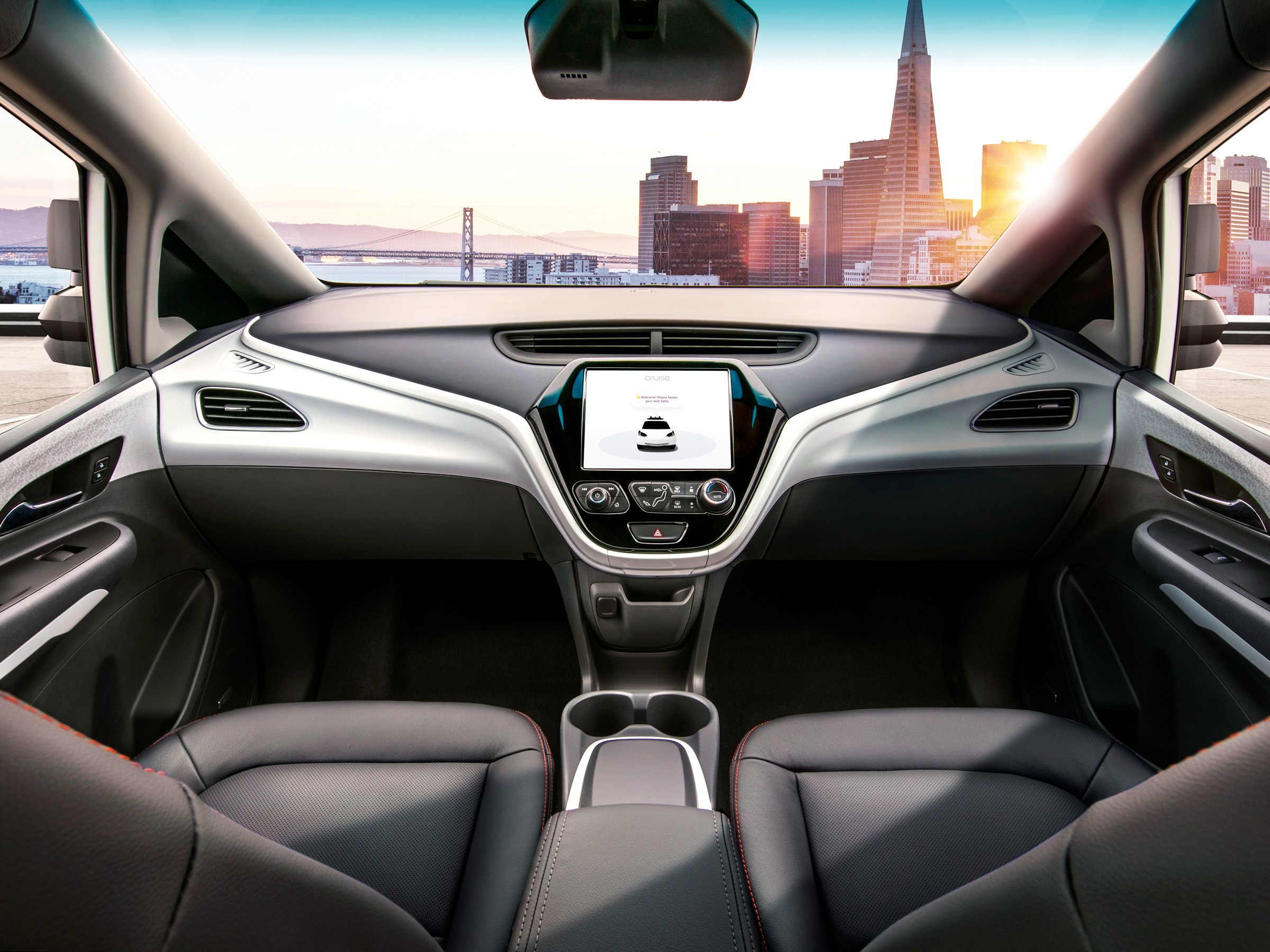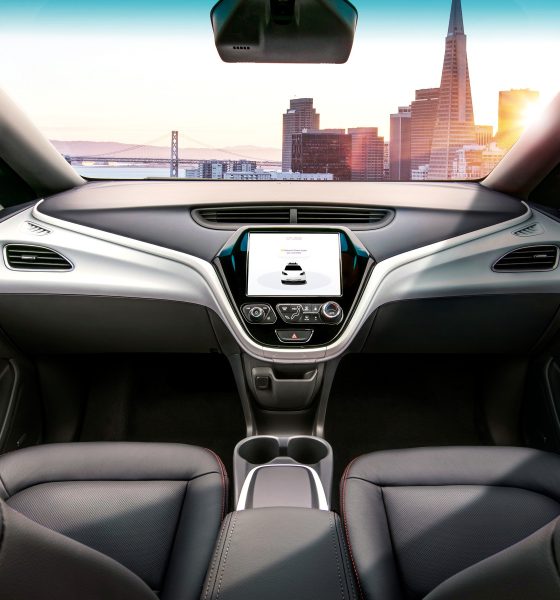

News
Tesla’s race to full self-driving under pressure as GM Cruise gets $2.25B investment
In a press release on Thursday, General Motors announced that SoftBank would be investing $2.25 billion in the automaker’s self-driving unit, GM Cruise Holdings LLC. The Detroit-based auto giant would also be investing an additional $1.1 billion into its self-driving division. These investments are aimed at boosting the unit’s capability to reach commercialization at scale by next year.
GM Chairman and CEO Mary Barra lauded the additional investments into the company’s self-driving unit. Barra noted in the press release that the support from SoftBank adds an “additional strong partner” as the automaker pursues its “vision of zero crashes, zero emissions, and zero congestion.”
GM Cruise currently operates a fleet of autonomous Chevy Bolt EVs in San Francisco that provide autonomous ride-hailing services to its employees. Plans are also underway to develop a Chevy Bolt EV variant that is specifically designed to be fully autonomous, with the vehicle not having pedals or a steering wheel.
SoftBank’s $2.25 billion investment into GM Cruise will be made in two tranches. SoftBank Vision Fund will first invest $900 million at the closing of the transaction. Once GM Cruise’s autonomous vehicles are ready to hit the market, Vision Fund will release the second tranche of $1.35 billion. This will ultimately result in SoftBank Vision Fund commanding a 19.6% stake in GM Cruise.
The new investment brings GM Cruise’s valuation close to $11.5 billion. The investment also brings to light the arguable undervaluation of Tesla’s Autopilot system, which has been on the consumer market for several years and has more than 150,000 vehicles from around the world that’s collecting data.
Still, GM Cruise’s new financial backing puts tremendous pressure on Tesla, which has seen its fair share of scrutiny as it steadily improves its Autopilot software in the public eye. Despite having collected reservation deposits for its Full Self-Driving capability that is yet to be released, Autopilot continues to improve and pacing toward full autonomy, according to CEO Elon Musk.
During the Q4 2017 earnings call, Musk addressed the delays in the company’s planned coast-to-coast autonomous drive. The exhibition, which was set for December 2017, did not pan out, although Tesla could have accomplished the coast-to-coast trip, according to Musk. However, doing so would have required far too much “specialized code” that would only be fully effective on a particular route. During the earnings call, Musk stated that Tesla would likely conduct the autonomous coast-to-coast drive sometime this year.
One notable difference between Tesla and GM Cruise, and Google’s Waymo is the Tesla’s opposition to the utilization of LiDAR technology – a common fixture on self-driving cars. Instead of LiDAR, Tesla’s electric cars rely on a series of cameras, radar, and ultrasonic sensors to collect data on a vehicle’s surroundings. LiDAR, which is used in GM Cruise’s Chevy Bolt EVs and Waymo’s autonomous vehicles, boasts high spatial precision. Inasmuch as LiDAR can measure distances well, however, it performs poorly in bad weather.
Ultimately, Tesla’s ace-in-the-hole in the increasingly competitive self-driving car market could be its neural net and sharing of fleet data. There are roughly 150,000 AP2.0 vehicles on the road today, with each one providing valuable data to Tesla’s deep neural networks. Akin to the human brain, the more data that is available to train the neural network, the better its performance would be.
Ultimately, Tesla’s neural net could be the difference-maker when the company goes all-in and competes in the self-driving race. Until then, however, the electric car maker could soon be taking a backseat to companies like GM Cruise and Waymo, both of which are accelerating their efforts at rolling out consumer-ready autonomous vehicles in the near future.

News
Tesla quietly flexes FSD’s reliability amid Waymo blackout in San Francisco
“Tesla Robotaxis were unaffected by the SF power outage,” Musk wrote in his post.

Tesla highlighted its Full Self-Driving (Supervised) system’s robustness this week by sharing dashcam footage of a vehicle in FSD navigating pitch-black San Francisco streets during the city’s widespread power outage.
While Waymo’s robotaxis stalled and caused traffic jams, Tesla’s vision-only approach kept operating seamlessly without remote intervention. Elon Musk amplified the clip, highlighting the contrast between the two systems.
Tesla FSD handles total darkness
The @Tesla_AI account posted a video from a Model Y operating on FSD during San Francisco’s blackout. As could be seen in the video, streetlights, traffic signals, and surrounding illumination were completely out, but the vehicle drove confidently and cautiously, just like a proficient human driver.
Musk reposted the clip, adding context to reports of Waymo vehicles struggling in the same conditions. “Tesla Robotaxis were unaffected by the SF power outage,” Musk wrote in his post.
Musk and the Tesla AI team’s posts highlight the idea that FSD operates a lot like any experienced human driver. Since the system does not rely on a variety of sensors and a complicated symphony of factors, vehicles could technically navigate challenging circumstances as they emerge. This definitely seemed to be the case in San Francisco.
Waymo’s blackout struggles
Waymo faced scrutiny after multiple self-driving Jaguar I-PACE taxis stopped functioning during the blackout, blocking lanes, causing traffic jams, and requiring manual retrieval. Videos shared during the power outage showed fleets of Waymo vehicles just stopping in the middle of the road, seemingly confused about what to do when the lights go out.
In a comment, Waymo stated that its vehicles treat nonfunctional signals as four-way stops, but “the sheer scale of the outage led to instances where vehicles remained stationary longer than usual to confirm the state of the affected intersections. This contributed to traffic friction during the height of the congestion.”
A company spokesperson also shared some thoughts about the incidents. “Yesterday’s power outage was a widespread event that caused gridlock across San Francisco, with non-functioning traffic signals and transit disruptions. While the failure of the utility infrastructure was significant, we are committed to ensuring our technology adjusts to traffic flow during such events,” the Waymo spokesperson stated, adding that it is “focused on rapidly integrating the lessons learned from this event, and are committed to earning and maintaining the trust of the communities we serve every day.”
News
Waymo scrutinized after self-driving taxis cause traffic jams during SF blackout
It’s not farfetched to speculate that it would have been a doomsday scenario for Tesla had FSD behaved this way.

A power outage across San Francisco over the weekend forced numerous Waymo self-driving taxis to stop at darkened intersections and cause traffic blockages in multiple locations across the city. The disruption left riders stranded, frustrated drivers blocked, and city officials stepping in as the Alphabet-owned company temporarily suspended service amid the widespread gridlock.
Needless to say, it would likely have been a doomsday scenario for Tesla had FSD behaved in a similar way, especially if fleets of its robotaxis blocked traffic for numerous drivers.
Power outage halts Waymo fleet
The outage knocked out electricity for tens of thousands of customers, leaving traffic signals dark across large parts of the city, as noted in a report from the New York Times. Waymo vehicles began stopping at intersections and remained stationary for extended periods, seemingly unable to operate. Tow truck operators worked through the night removing immobilized vehicles, while videos circulated online showing Waymos with hazard lights flashing as traffic backed up around them.
Waymo later confirmed that it had paused its Bay Area ride-hailing service after the San Francisco mayor’s office contacted the company about the congestion its vehicles were contributing to. Service began coming back online shortly after 3:30 p.m. local time, though some users still reported being unable to request rides. Waymo maintained that no injuries or accidents were reported during the outage.
Autonomous cars during emergencies
The incident surprised industry observers since autonomous vehicles are designed to function during signal outages and temporary connectivity losses. Waymo stated that its vehicles treat nonfunctional signals as four-way stops, but “the sheer scale of the outage led to instances where vehicles remained stationary longer than usual to confirm the state of the affected intersections. This contributed to traffic friction during the height of the congestion.” Experts suggested the problem may have been linked to the vehicles’ reliance on remote assistance teams, which help resolve complex situations the cars cannot handle independently.
“Yesterday’s power outage was a widespread event that caused gridlock across San Francisco, with non-functioning traffic signals and transit disruptions. While the failure of the utility infrastructure was significant, we are committed to ensuring our technology adjusts to traffic flow during such events,” the Waymo spokesperson stated, adding that it is “focused on rapidly integrating the lessons learned from this event, and are committed to earning and maintaining the trust of the communities we serve every day.”
News
Tesla aims to combat common Full Self-Driving problem with new patent
Tesla writes in the patent that its autonomous and semi-autonomous vehicles are heavily reliant on camera systems to navigate and interact with their environment.

Tesla is aiming to combat a common Full Self-Driving problem with a new patent.
One issue with Tesla’s vision-based approach is that sunlight glare can become a troublesome element of everyday travel. Full Self-Driving is certainly an amazing technology, but there are still things Tesla is aiming to figure out with its development.
Unfortunately, it is extremely difficult to get around this issue, and even humans need ways to combat it when they’re driving, as we commonly use sunglasses or sun visors to give us better visibility.
Cameras obviously do not have these ways to fight sunglare, but a new patent Tesla recently had published aims to fight this through a “glare shield.”
Tesla writes in the patent that its autonomous and semi-autonomous vehicles are heavily reliant on camera systems to navigate and interact with their environment.

The ability to see surroundings is crucial for accurate performance, and glare is one element of interference that has yet to be confronted.
Tesla described the patent, which will utilize “a textured surface composed of an array of micro-cones, or cone-shaped formations, which serve to scatter incident light in various directions, thereby reducing glare and improving camera vision.”

The patent was first spotted by Not a Tesla App.
The design of the micro-cones is the first element of the puzzle to fight the excess glare. The patent says they are “optimized in size, angle, and orientation to minimize Total Hemispherical Reflectance (THR) and reflection penalty, enhancing the camera’s ability to accurately interpret visual data.”
Additionally, there is an electromechanical system for dynamic orientation adjustment, which will allow the micro-cones to move based on the angle of external light sources.
This is not the only thing Tesla is mulling to resolve issues with sunlight glare, as it has also worked on two other ways to combat the problem. One thing the company has discussed is a direct photon count.
CEO Elon Musk said during the Q2 Earnings Call:
“We use an approach which is direct photon count. When you see a processed image, so the image that goes from the sort of photon counter — the silicon photon counter — that then goes through a digital signal processor or image signal processor, that’s normally what happens. And then the image that you see looks all washed out, because if you point the camera at the sun, the post-processing of the photon counting washes things out.”
Future Hardware iterations, like Hardware 5 and Hardware 6, could also integrate better solutions for the sunglare issue, such as neutral density filters or heated lenses, aiming to solve glare more effectively.









